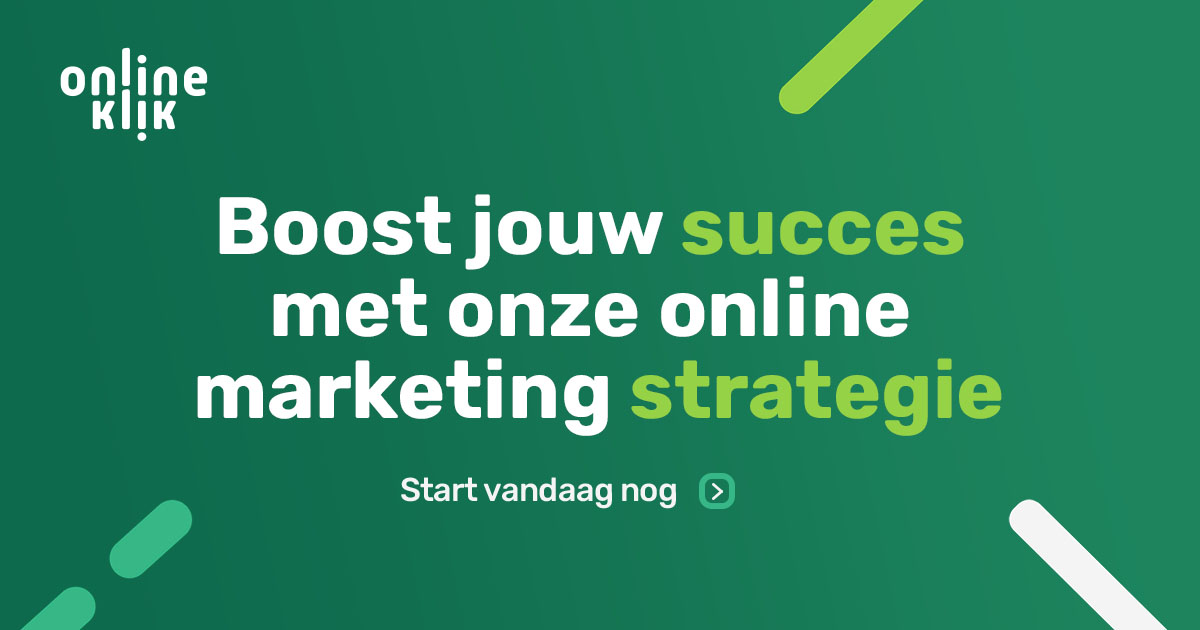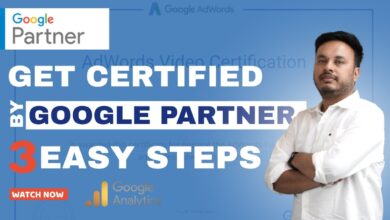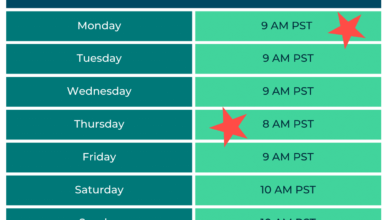
Take a Dip in the Pool of Online Marketing
Take a dip in the pool of online marketing! Sounds exciting, right? It is! But before you cannonball in, let’s be clear: it’s not all sunshine and rainbows. There are misconceptions, challenges, and a steep learning curve. This post will help you understand the basics, explore different marketing channels, and arm you with the knowledge to navigate the often-turbulent waters of the digital world.
We’ll cover everything from crafting killer content to analyzing your results and adapting to the ever-changing landscape. Get ready to make a splash!
We’ll dive into the allure of online marketing, debunking common myths and highlighting the essential skills you’ll need. Then, we’ll explore various channels like paid advertising, , and social media, comparing their strengths and weaknesses. We’ll even create a sample marketing campaign to solidify your understanding. The journey continues with a deep dive into content strategy, optimization, and analytics, showing you how to measure your success and adjust your approach.
Finally, we’ll tackle the challenges head-on, offering solutions to common problems and strategies for building a resilient marketing plan. So, grab your floaties, and let’s get started!
The Allure of Online Marketing
The shimmering promise of online marketing is undeniably alluring. The idea of reaching millions, building a brand, and generating revenue from the comfort of your home or office is incredibly attractive, especially in today’s digitally-driven world. It holds the potential for rapid growth and global reach, unlike traditional marketing methods which often feel slower and more geographically limited.
The sheer accessibility – anyone with a computer and an internet connection can start – adds to its initial appeal.The initial excitement, however, can quickly fade if you’re not prepared for the realities. Many newcomers enter the field with unrealistic expectations, believing success is immediate and effortless. They often underestimate the time, effort, and ongoing learning required to build a successful online marketing strategy.
Common Misconceptions in Online Marketing
Many new marketers fall prey to common misconceptions. One is the belief that simply creating a website or social media profile guarantees success. This is far from the truth. Effective online marketing requires a strategic approach encompassing , content creation, social media engagement, paid advertising, and analytics. Another misconception is the belief that all marketing techniques work equally well for everyone.
The effectiveness of a strategy heavily depends on your target audience, industry, and overall marketing goals. Finally, many underestimate the importance of consistent effort and adaptation. Online marketing is a dynamic field, constantly evolving; staying ahead of the curve requires continuous learning and adjustment.
Essential Skills for Successful Online Marketing
Success in online marketing demands a diverse skill set. Strong analytical skills are crucial for interpreting data from website analytics and marketing campaigns to identify what’s working and what’s not. This allows for data-driven decision-making and optimization. Content creation skills are equally vital, encompassing writing engaging blog posts, crafting compelling social media updates, and developing persuasive website copy.
Technical skills, such as basic HTML, CSS, and website management, are beneficial, even if you outsource some aspects. Finally, understanding of principles, social media marketing strategies, and paid advertising platforms like Google Ads and social media advertising are critical for reaching your target audience effectively. A solid understanding of marketing principles, including target audience identification, market research, and brand building, also forms the foundation of successful campaigns.
Comparison of Traditional and Online Marketing
The following table compares traditional and online marketing methods, highlighting key differences:
| Method | Cost | Reach | Measurability |
|---|---|---|---|
| Television Advertising | High | Broad, but potentially geographically limited | Difficult to accurately measure ROI |
| Print Advertising (Newspapers, Magazines) | Moderate to High | Targeted, but limited geographic reach | Difficult to accurately measure ROI |
| Search Engine Optimization () | Variable, but can be cost-effective long-term | Global, potentially highly targeted | Highly measurable through website analytics |
| Social Media Marketing | Variable, depending on platform and strategy | Targeted, depending on platform and strategy | Highly measurable through platform analytics |
Exploring the Different Pools

Source: jagoanhosting.com
So, you’re ready to dive into the world of online marketing. That’s fantastic! But with so many options available, it can feel overwhelming. Think of it like choosing a pool – some are calm and relaxing, others are fast-paced and exhilarating. Let’s explore the different “pools” – or marketing channels – and figure out which ones are best suited for your needs.
Three primary channels dominate the online marketing landscape: paid advertising, organic search (), and social media marketing. Each offers unique advantages and disadvantages, and a successful strategy often involves a blend of all three.
Paid Advertising, Organic Search, and Social Media Marketing: A Comparison
Paid advertising, organic search engine optimization (), and social media marketing represent distinct approaches to reaching your target audience online. Understanding their strengths and weaknesses is crucial for effective campaign planning.
Paid advertising, primarily through platforms like Google Ads and social media ad networks, offers immediate visibility. You pay for your ads to appear prominently in search results or users’ feeds. Its strength lies in its speed and control – you can target specific demographics and interests with precision. However, it’s costly and requires continuous investment to maintain visibility.
Once you stop paying, your reach disappears.
Organic search, on the other hand, focuses on improving your website’s ranking in search engine results pages (SERPs) without paying for ads. This involves optimizing your website content, structure, and backlinks to improve your search engine ranking. The payoff is long-term, sustainable traffic, but it requires significant time and effort to achieve high rankings, and results aren’t immediate. The competition can be fierce, and algorithm updates can impact your rankings unexpectedly.
Social media marketing leverages social platforms like Facebook, Instagram, Twitter, and TikTok to engage your audience directly. It allows for building brand loyalty, fostering community, and driving traffic to your website through engaging content and targeted advertising. Its strength is in its ability to create direct connections and build relationships with potential customers. However, it requires consistent effort to create engaging content and stay up-to-date with algorithm changes.
Measuring ROI can also be challenging.
Hypothetical Marketing Campaign: “AquaFresh” Sparkling Water
Let’s imagine we’re launching “AquaFresh,” a new line of naturally flavored sparkling water targeting health-conscious millennials and Gen Z. Our campaign will leverage all three channels to maximize reach and impact.
This integrated approach allows us to capture a wider audience, building brand awareness through organic search and social media, and driving immediate sales through targeted paid advertising.
- Paid Advertising (Google Ads & Instagram Ads): We’ll run targeted ads on Google Search for s like “healthy sparkling water,” “low-calorie drinks,” and “flavored sparkling water.” On Instagram, we’ll use visually appealing ads showcasing AquaFresh’s refreshing qualities and target users interested in fitness, healthy eating, and sustainable products.
- Organic Search (): We’ll optimize our website and blog content with relevant s, build high-quality backlinks from reputable sources, and create informative content about the health benefits of sparkling water and AquaFresh’s unique ingredients.
- Social Media Marketing (Instagram & TikTok): We’ll create engaging content on Instagram and TikTok showcasing AquaFresh’s vibrant flavors and lifestyle appeal. This will include influencer collaborations, user-generated content campaigns, and interactive contests to boost engagement and brand awareness.
Campaign KPIs
Measuring the success of our campaign will rely on key performance indicators (KPIs) tailored to each channel.
- Paid Advertising: Click-through rate (CTR), conversion rate, cost per acquisition (CPA), return on ad spend (ROAS).
- Organic Search: Website traffic from organic search, rankings, time on site, bounce rate.
- Social Media Marketing: Engagement rate (likes, comments, shares), reach, website clicks from social media, brand mentions.
Diving Deep

Source: googleusercontent.com
Taking a dip in the pool of online marketing can feel overwhelming, but it doesn’t have to be! One fantastic way to make a splash is by mastering video marketing, and a great resource to help you learn the ropes is this guide on getting it on with YouTube. Once you’ve got a handle on YouTube, you’ll be well on your way to confidently navigating the wider world of online marketing strategies.
So, you’ve dipped your toes into the online marketing pool; now it’s time to take the plunge! The allure is undeniable, but true success hinges on a robust and well-executed content strategy. Creating high-quality content isn’t just about throwing words onto a page; it’s about understanding your audience, crafting compelling narratives, and optimizing for visibility. Let’s dive into the specifics.High-quality content is the cornerstone of any successful online marketing campaign.
It builds trust, establishes expertise, and drives engagement. Without it, your marketing efforts will struggle to gain traction. Think of it as the fuel that powers your online presence, attracting and retaining customers while fostering brand loyalty. Poorly written, irrelevant, or thin content, on the other hand, can actively harm your reputation and deter potential customers.
Content Formats and Applications
Different content formats cater to different needs and preferences. Choosing the right format is crucial for maximizing impact. For instance, blog posts excel at providing in-depth information and establishing thought leadership. A well-written blog post on the benefits of a specific product can significantly influence purchasing decisions. Videos, on the other hand, are incredibly engaging and can effectively demonstrate product features or tell brand stories.
A product demonstration video showcasing ease of use can be far more persuasive than a static image. Infographics are perfect for presenting complex information in a visually appealing and easily digestible format. A concise infographic summarizing key statistics about market trends can quickly capture attention and convey critical data. The key is to strategically use a mix of formats to reach a wider audience and cater to different learning styles.
Creating Engaging and Shareable Content
Creating content that resonates with your audience and encourages sharing requires a strategic approach. Start by understanding your target audience’s interests, pain points, and preferred communication styles. Then, craft content that directly addresses these needs, offering valuable insights, solutions, or entertainment. Incorporate storytelling techniques to make your content more relatable and memorable. Use strong visuals, compelling headlines, and clear calls to action to encourage engagement and sharing.
Consider including social media sharing buttons on your content to make it easy for your audience to spread the word. Remember, the more people see and share your content, the wider your reach becomes. A successful example would be a viral video demonstrating a life hack using a common household product; its relatability and usefulness drive organic shares.
Search Engine Optimization ()
Optimizing content for search engines is essential for increasing its visibility and driving organic traffic. This involves a multifaceted approach including research to identify relevant terms your target audience is searching for. Incorporating these s naturally throughout your content, including in headlines, subheadings, and body text, is crucial. Optimizing images with descriptive alt text, building high-quality backlinks from reputable websites, and ensuring your website is mobile-friendly are also critical aspects of .
Consider the example of a local bakery optimizing their website content with s like “best sourdough bread [city name]” to attract local customers searching online. Proper ensures that your content ranks higher in search engine results, increasing its visibility and attracting more organic traffic.
Staying Afloat
Navigating the dynamic world of online marketing requires more than just a splash; it demands a constant awareness of your campaign’s performance. Understanding how to track, analyze, and adapt based on data is crucial for sustained success. This section dives into the essential tools and strategies for maintaining a successful online marketing presence.
Effective online marketing isn’t a set-it-and-forget-it endeavor. It’s an iterative process of testing, measuring, and refining your approach. By consistently monitoring key performance indicators (KPIs), you can identify what’s working, what’s not, and make data-driven adjustments to maximize your return on investment (ROI).
Tracking and Analyzing Campaign Performance
Tracking and analyzing your online marketing campaigns involves utilizing various analytics platforms and tools to gather and interpret data on your efforts. Google Analytics is a widely used, free tool that provides comprehensive data on website traffic, user behavior, and conversion rates. Other platforms, such as social media analytics dashboards (Facebook Insights, Twitter Analytics, etc.), offer specific insights into the performance of your social media marketing.
Paid advertising platforms like Google Ads and social media ad managers provide detailed metrics on ad performance, allowing you to optimize your campaigns for better results. By carefully examining this data, you can identify patterns, trends, and areas for improvement.
Key Metrics for Evaluating Success
Several key metrics are vital for evaluating the success of your online marketing campaigns. These metrics provide a clear picture of your campaign’s effectiveness and help you make informed decisions. Website traffic (unique visitors, page views), conversion rates (percentage of visitors completing a desired action, such as making a purchase or signing up for a newsletter), bounce rate (percentage of visitors who leave your website after viewing only one page), customer acquisition cost (CAC), return on ad spend (ROAS), engagement metrics (likes, shares, comments on social media), and brand mentions are all important factors to consider.
Understanding these metrics and their interrelationships is crucial for effective performance evaluation.
Adjusting Strategies Based on Performance Data
Once you’ve gathered and analyzed your data, the next step is to use those insights to adjust your strategies. If your bounce rate is high, it might indicate a problem with your website’s design or content. Low conversion rates might suggest issues with your call-to-action or landing page. A high CAC could signal the need to refine your targeting or bidding strategies.
Based on these insights, you can make necessary adjustments. This might involve redesigning your website, improving your content, refining your targeting, optimizing your ad copy, or adjusting your budget allocation. The key is to be agile and responsive to the data, continuously iterating and improving your campaigns.
Sample Marketing Report
The following table presents a hypothetical example of marketing data, illustrating how to present key metrics and their analysis.
| Metric | Value | Target | Analysis |
|---|---|---|---|
| Website Traffic | 10,000 | 15,000 | Below target. Requires further optimization of and PPC campaigns. |
| Conversion Rate | 2% | 5% | Significantly below target. A/B testing of landing pages and calls-to-action is needed. |
| Customer Acquisition Cost (CAC) | $50 | $30 | Above target. Re-evaluate targeting and bidding strategies to reduce costs. |
| Return on Ad Spend (ROAS) | 3:1 | 5:1 | Below target. Optimize ad copy and targeting to improve click-through rates and conversions. |
Navigating the Currents
The seemingly idyllic pool of online marketing quickly reveals its unpredictable currents once you dive in. While the potential rewards are substantial, the challenges are equally significant and require constant adaptation and strategic thinking to navigate successfully. Ignoring these challenges can lead to wasted resources and missed opportunities. This section explores common hurdles faced by online marketers and offers practical solutions to overcome them.
The digital landscape is a dynamic environment, constantly evolving with algorithm updates, shifting consumer behavior, and the emergence of new technologies. Success demands more than just a good idea; it necessitates a robust, adaptable strategy capable of weathering these inevitable storms.
Intense Competition, Take a dip in the pool of online marketing
The online marketplace is fiercely competitive. Businesses of all sizes vie for the same customer attention, making it crucial to differentiate your offerings and stand out from the crowd. Simply having a website isn’t enough; you need a well-defined value proposition, a strong brand identity, and a targeted marketing approach. For example, a small handcrafted jewelry business might focus on building a strong social media presence through high-quality images and engaging storytelling, rather than competing directly with mass-produced jewelry on price alone.
This targeted approach helps to build a loyal customer base and cultivate a distinct brand identity.
Algorithm Changes
Search engine algorithms, particularly Google’s, are constantly updated. These changes can significantly impact website traffic and organic search rankings. What worked yesterday might not work today. A solution lies in staying informed about algorithm updates, focusing on high-quality, relevant content, and employing best practices that prioritize user experience. For instance, adapting to Google’s focus on Core Web Vitals requires optimizing website loading speed, mobile-friendliness, and overall user experience.
Investing in tools and regularly analyzing website performance data can also provide crucial insights into areas needing improvement.
Budget Limitations
Many businesses, especially startups and small businesses, operate with limited marketing budgets. This necessitates a strategic allocation of resources, prioritizing high-impact activities with measurable ROI. Instead of spreading your budget thinly across multiple channels, focus on the platforms where your target audience is most active. For example, a business targeting a younger demographic might invest more heavily in social media marketing than in print advertising.
Utilizing cost-effective marketing strategies such as email marketing, content marketing, and organic social media engagement can also help maximize your budget’s impact.
Adapting to the Ever-Evolving Digital Landscape
The key to long-term success in online marketing lies in embracing continuous learning and adaptation. The digital landscape is in constant flux, with new platforms, technologies, and marketing strategies emerging regularly. To stay ahead, online marketers must remain informed about industry trends, experiment with new approaches, and be willing to adjust their strategies based on performance data. Regularly attending industry conferences, webinars, and workshops, as well as staying updated on relevant blogs and publications, can provide valuable insights and keep you abreast of the latest developments.
Developing a Resilient and Adaptable Marketing Strategy
A resilient marketing strategy incorporates several key elements. First, it should be data-driven, relying on analytics to inform decision-making and measure the effectiveness of different tactics. Second, it should be diversified, avoiding over-reliance on any single channel or platform. Third, it should be flexible, allowing for adjustments based on changing market conditions and customer behavior. Finally, it should be focused on building long-term relationships with customers, rather than just achieving short-term gains.
A company might, for example, build a robust email list and nurture those leads over time with valuable content and offers, building loyalty and repeat business. This strategy is more resilient to short-term algorithm changes or platform disruptions than one solely reliant on paid advertising.
Mastering the Strokes: Take A Dip In The Pool Of Online Marketing

Source: onlineklik.nl
So, you’ve dipped your toes in the pool of online marketing, explored the different avenues, and even braved a few deeper dives. Now it’s time to refine your technique and truly master the strokes. This involves leveraging advanced techniques to optimize your campaigns and navigate the ever-changing currents of the digital landscape. This stage is about efficiency, ethical practice, and a deep understanding of your customer’s journey.
Becoming a truly effective online marketer requires a move beyond basic strategies. It’s about leveraging data-driven decisions, automating processes, and always maintaining a strong ethical compass. This section will delve into three crucial aspects of advanced online marketing: A/B testing, marketing automation, and ethical considerations.
A/B Testing and Campaign Optimization
A/B testing is a powerful method for improving marketing campaigns. It involves creating two versions of a marketing asset (e.g., an email subject line, a website button, an ad copy) and comparing their performance. By systematically testing different variations, you can identify which elements resonate most effectively with your target audience. For instance, you might test two different subject lines for an email campaign – one focusing on a benefit and the other on a problem the product solves.
By tracking the open and click-through rates, you can determine which subject line performs better and refine your approach for future campaigns. The data-driven insights gleaned from A/B testing allow for continuous improvement and maximize the return on your marketing investment.
Marketing Automation Tools and Workflow Streamlining
Marketing automation tools are invaluable for streamlining workflows and increasing efficiency. These platforms allow you to automate repetitive tasks such as email marketing, social media posting, and lead nurturing. Examples include tools like HubSpot, Mailchimp, and Marketo. By automating these processes, you free up valuable time to focus on strategic initiatives and creative content development. For example, you could set up automated email sequences to nurture leads, sending targeted messages based on their interactions with your website or marketing materials.
This ensures consistent engagement and helps move prospects further down the sales funnel. Proper implementation of marketing automation significantly reduces manual effort and improves overall campaign performance.
Ethical Considerations in Online Marketing
Ethical considerations are paramount in online marketing. Transparency, honesty, and respect for user privacy are essential. This includes being upfront about data collection practices, obtaining explicit consent for marketing communications, and adhering to relevant regulations like GDPR and CCPA. Deceptive marketing practices, such as misleading advertising or using dark patterns to manipulate users, can severely damage a brand’s reputation and lead to legal repercussions.
Building trust with your audience through ethical practices is crucial for long-term success. A commitment to ethical online marketing not only protects consumers but also strengthens the integrity of your brand.
Visual Representation of the Customer Journey
Imagine a winding path representing the customer journey. The path begins with Awareness, depicted by a wide, open road where potential customers first encounter your brand through advertising, social media, or word-of-mouth. This leads to Interest, a slightly narrower section of the path where customers begin researching your product or service. Next comes Decision, a fork in the road where customers weigh their options and consider making a purchase.
The path then narrows further into Action, where the customer makes a purchase or signs up for your service. Finally, the path widens again into Loyalty, a broad, well-maintained highway representing ongoing engagement and repeat business. Along this path, various touchpoints are represented by markers – a billboard for an advertisement, a signpost for a blog post, a bridge for a customer service interaction, and a welcoming building representing a successful purchase.
Each touchpoint offers an opportunity to interact with the customer and guide them along the path towards loyalty. The journey is not linear; customers may revisit earlier stages, emphasizing the importance of consistent and engaging communication throughout.
Final Conclusion
So, you’ve taken your dip in the pool of online marketing – and hopefully, you didn’t drown! Remember, online marketing is a dynamic and ever-evolving field. There will be challenges, but with the right knowledge, strategies, and a willingness to adapt, you can create successful campaigns that reach your target audience and achieve your business goals. Don’t be afraid to experiment, analyze your results, and refine your approach over time.
The key is consistent learning and adaptation. Now go forth and conquer the digital world!
Questions Often Asked
What’s the difference between organic and paid marketing?
Organic marketing relies on unpaid strategies like and content marketing to attract traffic. Paid marketing involves paid advertising on platforms like Google Ads and social media.
How much does online marketing cost?
Costs vary greatly depending on your chosen channels, budget, and expertise. You can start with a small budget and scale up as you see results.
How long does it take to see results from online marketing?
It depends on your strategy, industry, and competition. Some results may be seen quickly, while others require a longer-term approach.
What are some common mistakes to avoid?
Ignoring analytics, neglecting , focusing on quantity over quality of content, and failing to adapt to algorithm changes are common pitfalls.





